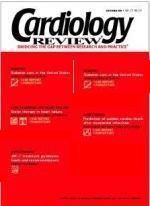Publication
Article
Does statin therapy reduce the incidence of atrial fibrillation?
Atrial fibrillation is the most common arrhythmia afflicting elderly patients, particularly those with rheumatic or hypertensive heart disease, congestive heart failure, or coronary artery disease (CAD).* While there is persistent debate about the best management strategies for atrial fibrillation (eg, cardioversion versus rate control and chronic anticoagulation), there is also interest in preventive measures. In this issue of Cardiology Review, Young-Xu and Ravid (page 20) review an observational study they conducted in 449 patients with CAD. They hypothesized that because of the efficacy of HMG-CoA reductase inhibitors (statins) in primary and secondary prevention of CAD and because of shared risk factors for CAD and atrial fibrillation, statin therapy might reduce the incidence of atrial fibrillation.
The key finding of the study was a reduction in the incidence of atrial fibrillation by more than half in statin users compared with nonusers (18% versus 37% per 1,000 person-years). There appears to be a modest correlation between serum cholesterol reduction and the relative risk of atrial fibrillation (see table 2, page 23), which does not hold up in a multivariate model, however. Analysis of total exposure to statins versus risk of atrial fibrillation suggests a weak dose-response relationship, although the confidence intervals for the four patient groups are of borderline significance. The mechanisms through which statins could affect the incidence of atrial fibrillation are unclear. The authors interpret their data as suggesting that it is independent of the cholesterol-lowering ability of statins. Whether anti-inflammatory effects, modulation of autonomic activity, or other as yet unidentified effects play a role remains to be determined. There are potential concerns in an observational study such as this, which the authors strive to identify and exclude. For example, the statin users were significantly younger and more likely to be taking beta blocking agents than nonusers, potentially influencing the outcome. In addition, it can be difficult to diagnose transient, asymptomatic atrial fibrillation. Because of these considerations, as well as the potential impact of statin therapy on risk of atrial fibrillation, a future prospective trial would be warranted. This could corroborate the findings of the present study and provide data on morbidity and mortality. Furthermore, a formal trial could be designed to elucidate the potential mechanism(s) whereby statins lower the risk of atrial fibrillation.
